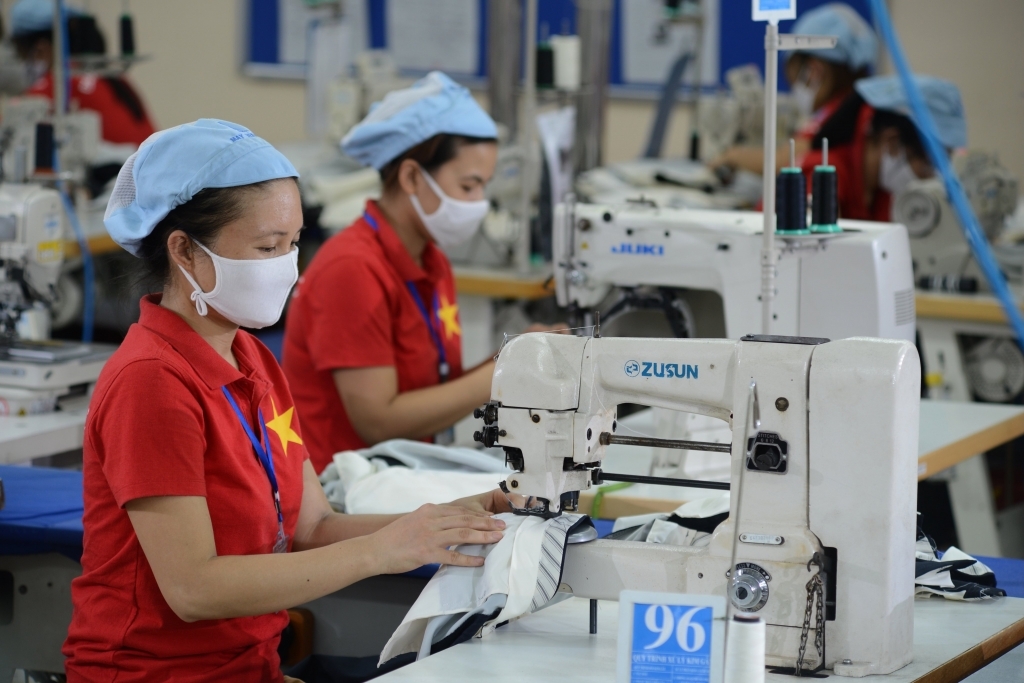 |
| Textile and garment are one of the industries that have many opportunities to boost exports to the countries participating in the CPTPP. Photo: Nguyen Thanh |
The Comprehensive and Progressive Agreement for Trans-Pacific Partnership (CPTPP) has been in effect for more than three years (from January 14, 2019). Looking back on the implementation process, Vo Hong Anh, Deputy Director of the European – American Market Department (Ministry of Industry and Trade) said that Vietnam’s exports to the CPTPP member countries increased sharply, especially in the Americas.
There are four American countries participating in the CPTPP: Canada, Mexico, Peru, and Chile. In which, Canada, Mexico, and Peru are the three countries that Vietnam has had FTA relations for the first time. Particularly, Chile and Vietnam had bilateral FTAs.
Thanks to the CPTPP, exports to Canada in 2021 reached US$5.3 billion, up 20.8% compared to 2020 and up 75% compared to the time before the CPTPP took effect. Similarly, in 2021, exports to Mexico reached US$4.6 billion, an increase of more than 100% compared to the time before the CPTPP took effect.
In terms of the structure of Vietnam’s exports to the CPTPP member markets, the leading position was phones and components, accounting for 20%; followed by computers, equipment, and electronic products, accounting for 16%; machinery, equipment, and spare parts accounted for 9%; textiles accounted for 10%, and footwear accounted for 7%.
“For textiles, leather, and footwear, thanks to the CPTPP, Vietnamese exporters have had a tariff advantage of 10-20% compared to their competitors. They should take full advantage of these preferential tariff advantages,” said Hong Anh.
Another strong commodity exported to the CPTPP member markets mentioned by the leader of the European – American Market Department was seafood. For seafood, most of the CPTPP members have committed to reducing tariffs to 0% within 0-3 years.
Currently, the coverage of Vietnamese seafood products in these markets has increased markedly. For example, Vietnam is the leading shrimp exporter in Canada, accounting for 34% of the total value of Canada’s shrimp imports. As for Mexico, Vietnam is experiencing growth in pangasius exports. Mexico has been the largest importer of Vietnamese pangasius among the CPTPP member countries.
Additionally, thanks to preferential tariffs, Vietnam has now become one of the five largest exporters of wooden furniture in Canada. However, for Mexico and Chile, the market share of Vietnamese wooden furniture is still small, only about 1%, so the potential for developing this product is large.
Hong Anh added that Vietnam also has strengths in exporting bags, suitcases, umbrellas, and agricultural products such as tea, cashew nuts, coffee, and pepper to the CTPPP countries in general and the Americas in particular.
Vo Hong Anh said that in terms of the structure of Vietnam’s exports to the Americas, phones, components, computers, machinery, and spare parts accounted for the largest proportion of about 43%; followed by textiles, leather, and footwear, accounting for about 25%; wood and wood products accounted for about 8%; and agriculture and fisheries accounted for about 4%.
Thus, the proportion of technology, processing, and manufacturing products accounted for a large proportion of exports compared to agricultural products. However, the FDI sector made a large contribution to export value. Meanwhile, the contribution of Vietnam’s domestic industry was not high.
In addition, for each commodity product, Vietnam only stops at processing and assembling for foreign countries, so the added value is not high. For agricultural and aquatic products, Vietnam also mainly exports frozen raw products, with low processing and value-added in export products.
Meanwhile, the Americas region, especially North American countries such as the US and Canada, all have strict requirements on goods quality, attaching importance to problems in the production process such as social responsibility, environmental responsibility, and labor standards.
In the future, besides improving export turnover, enterprises must consider and focus on adding value to their products by improving product quality, in accordance with the criteria, tastes, and requirements of the markets; innovate and apply science and technology in the production process; towards green products and sustainable development,” said Hong Anh.
